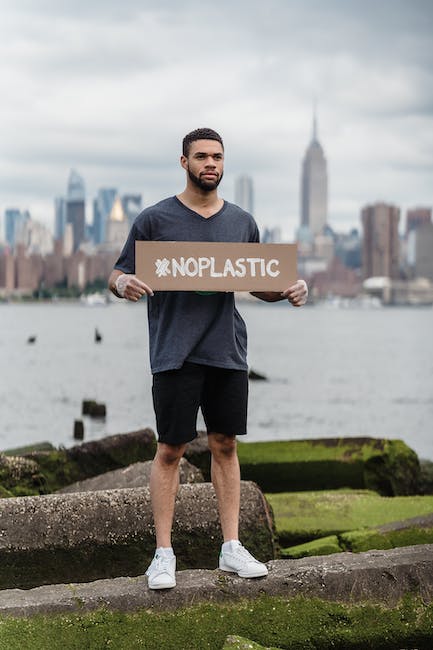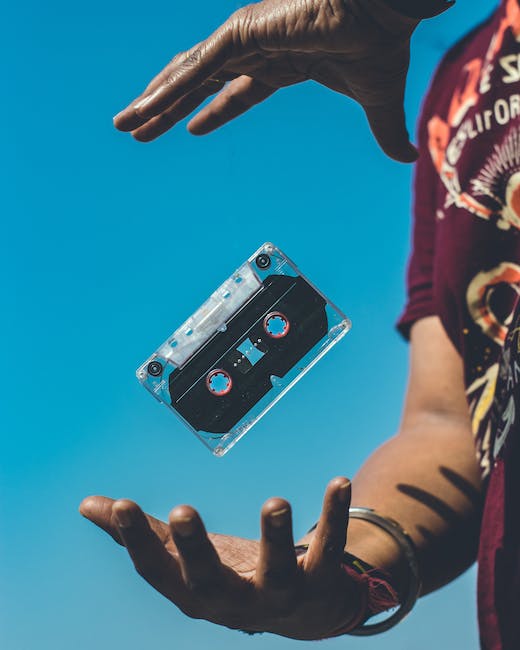-
Table of Contents
- Introduction
- The Cost Comparison: Biodegradable vs. Traditional Plastic
- The Environmental Impact of Biodegradable Plastic Production
- The Market Demand for Biodegradable Plastic
- The Future of Biodegradable Plastic Technology
- The Role of Government Regulations in Biodegradable Plastic Pricing
- Q&A
- Conclusion
Introduction
Biodegradable plastic is a type of plastic that can be broken down by natural processes such as bacteria or sunlight. It is often touted as a more environmentally friendly alternative to traditional plastic, which can take hundreds of years to decompose. However, one common concern about biodegradable plastic is its cost. In this article, we will explore whether or not biodegradable plastic is expensive compared to traditional plastic.
The Cost Comparison: Biodegradable vs. Traditional Plastic
Plastic is one of the most widely used materials in the world. It is used in everything from packaging to construction, and it is estimated that over 300 million tons of plastic are produced every year. However, the environmental impact of plastic is becoming increasingly apparent, with plastic waste polluting our oceans and harming wildlife. As a result, there has been a growing interest in biodegradable plastic as a more sustainable alternative. But is biodegradable plastic expensive?
The short answer is yes, biodegradable plastic is generally more expensive than traditional plastic. This is because the production process for biodegradable plastic is more complex and requires more expensive materials. Biodegradable plastic is made from plant-based materials such as cornstarch, which is more expensive than the petroleum-based materials used in traditional plastic. Additionally, the production process for biodegradable plastic requires more energy and resources, which also adds to the cost.
However, it is important to note that the cost of biodegradable plastic is not always significantly higher than traditional plastic. The cost difference can vary depending on the specific type of plastic and the manufacturer. In some cases, the cost of biodegradable plastic may only be slightly higher than traditional plastic, while in other cases it may be significantly higher.
Another factor to consider when comparing the cost of biodegradable and traditional plastic is the environmental impact. While biodegradable plastic may be more expensive, it is also more environmentally friendly. Traditional plastic can take hundreds of years to decompose, while biodegradable plastic can break down in a matter of months or years. This means that biodegradable plastic has a much lower impact on the environment and can help to reduce the amount of plastic waste that ends up in landfills and oceans.
In addition to the environmental benefits, there are also potential cost savings associated with using biodegradable plastic. For example, some companies may be able to reduce their waste disposal costs by using biodegradable plastic, as it can be composted rather than sent to a landfill. Additionally, some consumers may be willing to pay a premium for products that are packaged in biodegradable plastic, which could help to offset the higher production costs.
Overall, while biodegradable plastic is generally more expensive than traditional plastic, it is important to consider the environmental impact and potential cost savings associated with using biodegradable plastic. As more companies and consumers become aware of the environmental impact of plastic, the demand for biodegradable plastic is likely to increase, which could help to drive down the cost over time. In the meantime, it is up to individuals and businesses to weigh the costs and benefits of using biodegradable plastic and make the best decision for their needs.
The Environmental Impact of Biodegradable Plastic Production
Biodegradable plastic has been touted as a solution to the environmental problems caused by traditional plastic. However, there are concerns about the cost of producing biodegradable plastic and its impact on the environment. In this article, we will explore the environmental impact of biodegradable plastic production and whether it is expensive.
The production of biodegradable plastic requires the use of natural resources such as corn, sugarcane, and potatoes. These resources are grown using fertilizers and pesticides, which can have a negative impact on the environment. Additionally, the production process of biodegradable plastic requires energy, which is often generated from non-renewable sources such as coal and oil. This means that the production of biodegradable plastic can contribute to greenhouse gas emissions and climate change.
Furthermore, the production of biodegradable plastic requires a significant amount of water. For example, it takes approximately 1,500 liters of water to produce 1 kilogram of corn-based biodegradable plastic. This can put a strain on water resources, especially in areas where water is scarce.
Despite these environmental concerns, biodegradable plastic is often marketed as a more sustainable alternative to traditional plastic. However, the cost of producing biodegradable plastic is often higher than traditional plastic. This is because the production process is more complex and requires more resources.
For example, the cost of producing a biodegradable plastic bag can be up to three times higher than a traditional plastic bag. This cost is passed on to consumers, making biodegradable plastic products more expensive. Additionally, the demand for biodegradable plastic is still relatively low, which means that economies of scale cannot be achieved, further increasing the cost of production.
However, it is important to note that the cost of traditional plastic does not reflect its true environmental impact. The cost of cleaning up plastic pollution, which can harm wildlife and ecosystems, is not factored into the price of traditional plastic products. Therefore, the true cost of traditional plastic is much higher than its market price.
In contrast, biodegradable plastic can break down naturally in the environment, reducing the amount of plastic pollution. This can have a positive impact on the environment and reduce the cost of cleaning up plastic pollution in the long run.
In conclusion, the production of biodegradable plastic has an environmental impact, but it is often marketed as a more sustainable alternative to traditional plastic. While the cost of producing biodegradable plastic is higher than traditional plastic, the true cost of traditional plastic is not reflected in its market price. Therefore, it is important to consider the environmental impact of plastic production when making purchasing decisions. Biodegradable plastic may be more expensive, but it can have a positive impact on the environment and reduce the cost of cleaning up plastic pollution in the long run.
The Market Demand for Biodegradable Plastic
Biodegradable plastic is a type of plastic that can be broken down by microorganisms into natural substances such as water, carbon dioxide, and biomass. It is an alternative to traditional plastic, which can take hundreds of years to decompose and is a major contributor to environmental pollution. Biodegradable plastic has gained popularity in recent years due to its eco-friendly properties, but many people wonder if it is expensive compared to traditional plastic.
The market demand for biodegradable plastic has been steadily increasing in recent years. According to a report by Grand View Research, the global biodegradable plastic market size was valued at USD 3.4 billion in 2020 and is expected to grow at a compound annual growth rate (CAGR) of 9.9% from 2021 to 2028. The report attributes this growth to the increasing awareness about environmental issues and the need for sustainable packaging solutions.
The demand for biodegradable plastic is driven by various factors, including government regulations, consumer preferences, and corporate sustainability initiatives. Many countries have implemented regulations to reduce plastic waste and promote the use of biodegradable plastic. For example, the European Union has banned single-use plastics such as straws, cutlery, and cotton buds, and requires member states to achieve a 90% collection target for plastic bottles by 2029. Similarly, India has banned single-use plastics and aims to eliminate all single-use plastics by 2022.
Consumer preferences have also played a role in the demand for biodegradable plastic. Many consumers are becoming more environmentally conscious and are willing to pay more for eco-friendly products. A survey by Nielsen found that 81% of global consumers feel strongly that companies should help improve the environment. This has led to an increase in demand for biodegradable plastic products such as bags, packaging, and utensils.
Corporate sustainability initiatives have also contributed to the demand for biodegradable plastic. Many companies are adopting sustainable practices and are looking for ways to reduce their environmental impact. For example, McDonald’s has committed to sourcing 100% of its coffee, palm oil, and fish from sustainable sources, and aims to use 100% renewable, recycled, or certified sources for all of its packaging by 2025. Similarly, Coca-Cola has pledged to collect and recycle the equivalent of every bottle or can it sells by 2030.
Despite the increasing demand for biodegradable plastic, many people still wonder if it is expensive compared to traditional plastic. The answer is that it depends on various factors such as the type of biodegradable plastic, the production process, and the market demand. In general, biodegradable plastic is more expensive than traditional plastic, but the price difference is decreasing as technology improves and production scales up.
The cost of biodegradable plastic depends on the type of biodegradable plastic used. There are two main types of biodegradable plastic: bioplastics and oxo-biodegradable plastics. Bioplastics are made from renewable resources such as corn starch, sugarcane, or potato starch, and are fully biodegradable. Oxo-biodegradable plastics are traditional plastics that have been treated with additives that help them break down faster. Bioplastics are generally more expensive than oxo-biodegradable plastics due to the higher cost of raw materials and production processes.
The production process also affects the cost of biodegradable plastic. Biodegradable plastic requires specialized equipment and processes that are different from traditional plastic production. This can increase the cost of production, especially for small-scale producers. However, as the demand for biodegradable plastic increases, the cost of production is expected to decrease due to economies of scale.
Finally, the market demand for biodegradable plastic affects its cost. As more companies and consumers demand biodegradable plastic, the price is likely to decrease due to increased competition and production efficiency. This is already happening in some markets, such as Europe, where the price of biodegradable plastic bags has decreased due to increased production and competition.
In conclusion, biodegradable plastic is more expensive than traditional plastic, but the price difference is decreasing as technology improves and production scales up. The market demand for biodegradable plastic is increasing due to government regulations, consumer preferences, and corporate sustainability initiatives. As the demand for biodegradable plastic continues to grow, the cost is expected to decrease, making it a more viable alternative to traditional plastic.
The Future of Biodegradable Plastic Technology
Biodegradable plastic is a type of plastic that can be broken down by microorganisms into natural substances such as water, carbon dioxide, and biomass. It is considered an eco-friendly alternative to traditional plastic, which can take hundreds of years to decompose and can cause harm to the environment. However, one question that often arises is whether biodegradable plastic is expensive.
The answer to this question is not straightforward. Biodegradable plastic can be more expensive than traditional plastic, but it depends on several factors. One of the main factors is the type of biodegradable plastic being used. There are different types of biodegradable plastic, such as polylactic acid (PLA), polyhydroxyalkanoates (PHA), and starch-based plastics. Each type has its own properties and production costs.
PLA is a popular type of biodegradable plastic that is made from renewable resources such as corn starch or sugarcane. It is compostable and can break down in a commercial composting facility within a few months. However, PLA is more expensive to produce than traditional plastic, which is made from fossil fuels. This is because the production process for PLA requires more energy and resources.
PHA is another type of biodegradable plastic that is made from bacteria that can produce a polymer. It is biodegradable and can break down in soil or water within a few months. However, PHA is currently more expensive to produce than PLA or traditional plastic. This is because the production process for PHA is still in the early stages of development and requires more research and development.
Starch-based plastics are another type of biodegradable plastic that is made from renewable resources such as corn or potatoes. They are biodegradable and can break down in soil or water within a few months. Starch-based plastics are currently less expensive to produce than PLA or PHA, but they have some limitations. They are not as strong as traditional plastic and can only be used for certain applications.
Another factor that can affect the cost of biodegradable plastic is the production volume. The more biodegradable plastic that is produced, the lower the cost per unit. This is because the fixed costs of production, such as equipment and labor, can be spread out over a larger number of units. As the demand for biodegradable plastic increases, the cost is likely to decrease.
In addition to production costs, there are other factors that can affect the cost of biodegradable plastic. These include transportation costs, storage costs, and disposal costs. Biodegradable plastic may require special handling and disposal methods, which can add to the overall cost.
Despite the higher cost of biodegradable plastic, there are many benefits to using it. Biodegradable plastic can help reduce the amount of plastic waste in the environment and can be a more sustainable alternative to traditional plastic. It can also help reduce the carbon footprint of plastic production by using renewable resources.
In conclusion, biodegradable plastic can be more expensive than traditional plastic, but it depends on several factors such as the type of biodegradable plastic, production volume, and additional costs. While the cost of biodegradable plastic may be higher, it is important to consider the long-term benefits to the environment and sustainability. As technology advances and production methods improve, the cost of biodegradable plastic is likely to decrease, making it a more accessible and affordable option for businesses and consumers.
The Role of Government Regulations in Biodegradable Plastic Pricing
Biodegradable plastic has been touted as a solution to the growing problem of plastic waste. However, one of the concerns that people have is whether it is expensive. The answer to this question is not straightforward, as there are several factors that affect the pricing of biodegradable plastic. One of these factors is government regulations.
Government regulations play a significant role in the pricing of biodegradable plastic. In many countries, there are regulations that require manufacturers to use biodegradable materials in their products. These regulations are aimed at reducing the amount of plastic waste that ends up in landfills and the environment. However, the cost of complying with these regulations can be high, and this cost is often passed on to consumers.
In addition to regulations that require the use of biodegradable materials, there are also regulations that govern the disposal of plastic waste. For example, in some countries, there are regulations that require businesses to separate their waste into different categories, including biodegradable waste. This means that businesses need to invest in separate waste disposal systems, which can be expensive. Again, these costs are often passed on to consumers.
Another way in which government regulations affect the pricing of biodegradable plastic is through taxes. In some countries, there are taxes on plastic products, including biodegradable plastic. These taxes are intended to discourage the use of plastic and encourage the use of more environmentally friendly materials. However, these taxes can also make biodegradable plastic more expensive for consumers.
Despite the role of government regulations in the pricing of biodegradable plastic, it is important to note that not all biodegradable plastics are created equal. Some biodegradable plastics are more expensive than others, depending on the materials used and the manufacturing process. For example, biodegradable plastics made from plant-based materials are generally more expensive than those made from petroleum-based materials.
Another factor that affects the pricing of biodegradable plastic is the demand for it. As more people become aware of the environmental impact of plastic waste, the demand for biodegradable plastic is likely to increase. This increased demand could lead to lower prices as manufacturers scale up production to meet the demand.
In conclusion, the pricing of biodegradable plastic is affected by several factors, including government regulations, taxes, and demand. While government regulations play a significant role in the pricing of biodegradable plastic, it is important to note that not all biodegradable plastics are created equal. Consumers should be aware of the materials used and the manufacturing process when choosing biodegradable plastic products. As the demand for biodegradable plastic increases, it is possible that prices will become more competitive, making it a more affordable option for consumers.
Q&A
1. What is biodegradable plastic?
Biodegradable plastic is a type of plastic that can break down naturally in the environment, typically within a few months to a few years.
2. Is biodegradable plastic more expensive than traditional plastic?
Yes, biodegradable plastic is generally more expensive than traditional plastic due to the cost of production and the use of specialized materials.
3. Why is biodegradable plastic more expensive?
Biodegradable plastic requires specialized materials and production processes that are more expensive than those used for traditional plastic. Additionally, the demand for biodegradable plastic is currently lower than for traditional plastic, which can also drive up the cost.
4. Are there any benefits to using biodegradable plastic despite the higher cost?
Yes, biodegradable plastic can help reduce the amount of plastic waste in the environment and may be a more sustainable option in the long run. Additionally, some consumers may be willing to pay more for products that are environmentally friendly.
5. Will the cost of biodegradable plastic decrease in the future?
It is possible that the cost of biodegradable plastic will decrease as technology improves and demand increases. However, it is difficult to predict future pricing trends with certainty.
Conclusion
Biodegradable plastic can be more expensive than traditional plastic due to the cost of production and the use of specialized materials. However, the long-term benefits of using biodegradable plastic, such as reducing environmental pollution and promoting sustainability, make it a worthwhile investment. Additionally, as technology advances and demand increases, the cost of biodegradable plastic is expected to decrease. Overall, while biodegradable plastic may be more expensive in the short term, it is a necessary step towards a more sustainable future.







